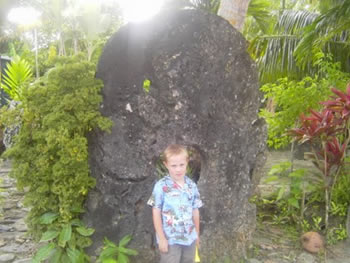Traditional Money
A Yap about Money: Journey to the Forbidden Island of Stone Coins
In July 2008 the author and his family travelled to remote islands of Yap proper to spend ten days inspecting some of the world’s most curious and spectacular forms of money including thousands of giant limestone ‘coins’ which reach up to 12 feet (3.6 metres) in diameter and weigh several tonne - a numismatic ‘Jurassic Park’!...[more]
The Love of Eve is the Root of all Money: Examples of Traditional Currencies
ALL OVER THE inhabited world with few exceptions (notably Polynesia and sub-tropical Australia) money of various kinds evolved. In Asia Minor it was precious metal which perhaps in the 7th century BC, became flattened, rounded, stamped and weighed, that despite being relatively easy to counterfeit, spread world-wide and came to dominate economic life. Coined money had a lot of competition: salt, red ochre, tea, feathers, slaves, human skulls, woodpecker scalps, flying fox jaws, teeth, pigs, horses, goats, sheep skins, cocoa beans, almonds, rice, beeswax, tobacco, cloth, giant stone disks and an incredible diversity of other objects which are often seen through Western eyes as a mark of the primitiveness or backwardness of the societies using it as money...[more]
Stone Money, Yap Island
Taken by Allan, Jan and Tristram Speedy in July 2008
 |
 |
 |
 |
 |
 |
 |
 |
 |
 |

|
|
|
Measuring Stone Money The 'Forbidden Island' of Rumung, YAP Photography is forbidden on Rumung so instead I sketched the largest money in the world. The rai on the top left is in the shape of a pentagon. The stone is 9 feet 5 inches in diameter (2.88 metres); the hole in the centre is nineteen inches wide and twelve inches thick tapering to nine inches at the edge. Lying on the ground nearby (bottom right) is the largest rai on Yap. The stone is 11 feet 10 inches in diameter (3.6 metres); the hole in the centre is nineteen inches wide and thirteen inches thick tapering to nine inches at the edge. The weight would be massive and could take 50 men to move it. |
Links:
Charles Opitz: Traditional Money - Odd & Curious Money - Primitive Money
Recommended Reading:
QUIGGIN, A.H. A Survey of Primitive Money. The Beginnings of Currency (London, 1949)
